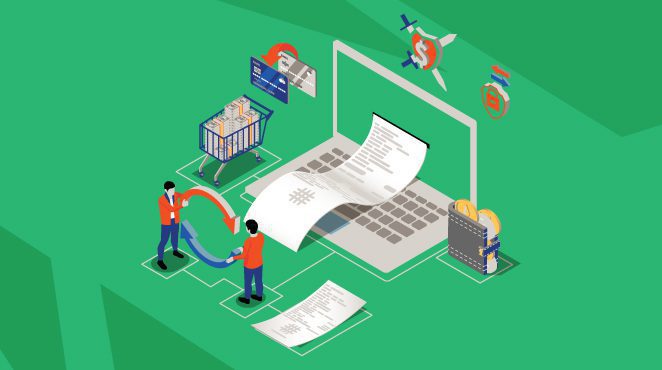Accounting professionals are wired differently than IT professionals. That statement is not meant to disparage either group, but to acknowledge the disparities between mindsets and business focal points. Relatively few people understand the meaning behind the dizzying array of critical financial metrics and also have a strong comprehension of all things IT.
Successful MSPs get both. While one individual may not be responsible for the financial and technology sides of the house, the collective team must know what’s going on with critical client-oriented activities, the IT ecosystem, AND all back-office operations. No key metric should slip their attention.
The performance of billing, collections and payment operations is the perfect example. MSP owners and other business unit leaders should have a firm handle on the key metrics that can affect their ability to pay the bills while expanding the organization. Without a good understanding and proper oversight of these critical operations, even the best of companies have been known to stumble—if not fail. The list of IT services companies with sizable contracts that nonetheless ran into financial difficulties due to poor collections methods is longer than most would expect. Banking on MRR before clients pay their bills can lead to unhealthy financial projections and get MSPs into trouble over the long-term.
Measure and Track to Boost Cash Flow
Everyone working for an MSP should understand the impact and importance of collections activities. Team members need to know their support has a positive effect on operations, company growth and, in many cases, bonuses and pay increases. Suggesting ways to trim accounts receivables or encouraging clients to adopt autopay can aid those objectives tremendously.
MSPs should also track and, when necessary, work to improve Key Performance Indicators (KPIs) related to billing and collections, including:
- Cash Flow and Debt Usage. One of the major problems for any business is converting predictable income streams into actual bank deposits. A strong cash flow allows MSPs to borrow less of other peoples’ money to fund expansion and take on new clients. Implementing best practices to collect payments for the services the provider delivers is essential to that goal.
- Earnings Before Interest, Taxes, Depreciation, and Amortization (EBITDA). This KPI consistently tops the list for any business valuation discussion. Regular evaluation of the overall financial performance of the organization allows MSPs to spot and rectify potential negative trends—and reinforce positive tendencies. The problem many MSPs experience is sales don’t always translate into earnings; accounts receivables must be converted into payments before that number goes on the books.
- Average Monthly Recurring Revenue (AMRR). Measuring an MSP’s sales projections helps project eventual income opportunities. MRR is totaling the monthly billing charges for each client and then deducting hardware sales and one-time or intermittent fees. While this metric is a standard in the managed services community, highlighting the ideal financial health and value, unless that provider has a strong billing and collections game, actual monthly revenue will likely be lower.
- Contract Profitability. Tracking this KPI helps MSPs manage and improve efficiencies within their operations. Accounts receivables can have a major impact on these figures, since the investments required to support that client may not be recouped if the billing and payments cycle is extended. The more time the collections team spend chasing down overdue invoices, the less profitable the contract or engagement.
- Client Churn Rate. Measuring the percentage of clients your MSP loses over time is critical to retention plans and potential M&A efforts. Many providers end up parting ways with customers for payment-related issues, so implementing an effective and fair collections process can ease many of those pressure points in the relationship.
- Client Lifetime Value (CLV). Similar to contract profitability, but from a longer-term assessment perspective, this KPI quantifies the strategic financial opportunities of working with various businesses. Understanding the value of different engagements allows MSPs to gauge investments needs for acquiring and growing new managed services customers. In addition to sales and marketing expenses, providers must estimate the cost of the goods and services sold, as well as support. Collections charges and write offs are easy to overlook, but implementing efficient policies and procedures for billing and payments can minimize the impact on CLV.
- Break-Even Sales Point. No matter how successful an MSP is at landing new clients and contracts, the business will struggle if the leadership team cannot keep costs in check and ensure clients are paying on time. For example, before implementing ConnectBooster, there are many reports of providers having $50,000 to $100,000 in accounts receivables balances that they struggle to collect. Those situations can lead to liquidity and cash flow issues and drive up the cost of doing business or eventually cause an MSP to close its doors.
- General & Administrative (G&A) Expenses. The more people and time businesses put into their collections’ efforts, the greater the impact on the bottom-line. Managed services is all about efficiency, so implementing effective policies and industry best practices across the entire organization is critical to success—especially with billing and collections. Shortening that cycle through automation helps reduce costs while ensuring more timely payments.
Watch KPIs to Reinforce Best Practices
The bottom line is every employee’s responsibility. From owners and managers to sales, marketing, and support teams, ensuring the profitability and long-term viability of the organization protects everyone.
Effective billing and collections processes are key to that financial stability. From the first contact with a prospective client to their payment hitting the company’s bank account, efficiency ensures success. Helping employees understand how their particular activities affect the bottom-line can spur cost-saving and business-improving ideas and make them feel more connected to the business.
MSPs can utilize these KPIs in those efforts. By scrutinizing results and adjusting processes and plans, providers can strengthen their profits and cash flow and ensure the long-term success of their business.
ConnectBooster is proven to boost cash flow while saving MSPs valuable time and money. Schedule a 15-minute discovery call to see how.

